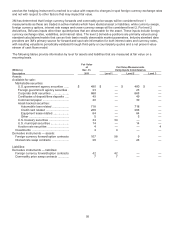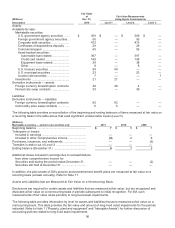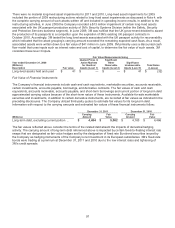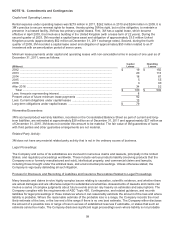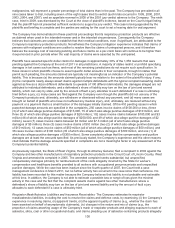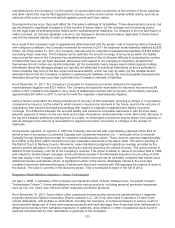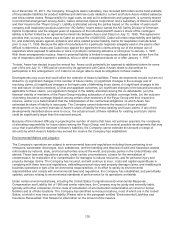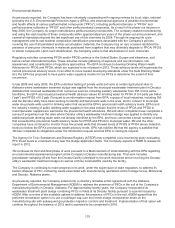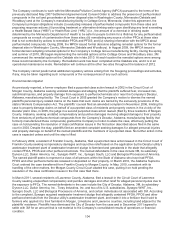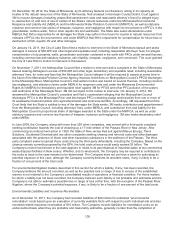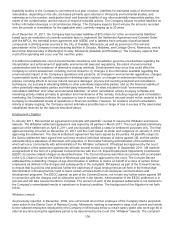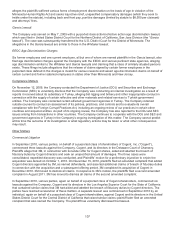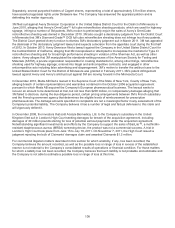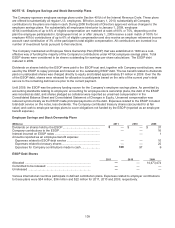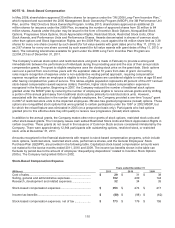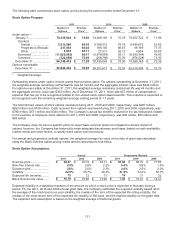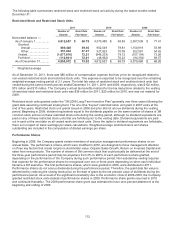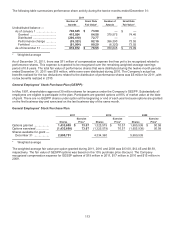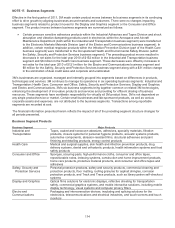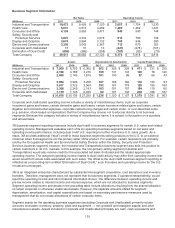3M 2011 Annual Report Download - page 111
Download and view the complete annual report
Please find page 111 of the 2011 3M annual report below. You can navigate through the pages in the report by either clicking on the pages listed below, or by using the keyword search tool below to find specific information within the annual report.
105
On December 30, 2010, the State of Minnesota, by its Attorney General Lori Swanson, acting in its capacity as
trustee of the natural resources of the State of Minnesota, filed a lawsuit in Hennepin County District Court against
3M to recover damages (including unspecified assessment costs and reasonable attorney’s fees) for alleged injury
to, destruction of, and loss of use of certain of the State’s natural resources under the Minnesota Environmental
Response and Liability Act (MERLA) and the Minnesota Water Pollution Control Act (MWPCA), as well as statutory
nuisance and common law claims of trespass, nuisance, and negligence with respect to the presence of PFC’s in the
groundwater, surface water, fish or other aquatic life and sediments. The State also seeks declarations under
MERLA that 3M is responsible for all damages the State may suffer in the future for injuries to natural resources from
releases of PFCs into the environment, and under MWPCA that 3M is responsible for compensation for future loss or
destruction of fish, aquatic life and other damages.
On January 14, 2011, the City of Lake Elmo filed a motion to intervene in the State of Minnesota lawsuit and seeks
damages in excess of $50,000 and other legal and equitable relief, including reasonable attorneys’ fees, for alleged
contamination of city property, wells, groundwater and water contained in the wells with PFCs under several theories,
including common law and statutory nuisance, strict liability, trespass, negligence, and conversion. The court granted
the City of Lake Elmo’s motion to intervene in this lawsuit.
On November 7, 2011, the Metropolitan Council filed a motion to intervene and a complaint in the State of Minnesota
lawsuit seeking damages in excess of $50,000 and other legal, declaratory and equitable relief, including reasonable
attorneys’ fees, for costs and fees that the Metropolitan Council alleges it will be required to assess at some time in
the future if the Minnesota Pollution Control Agency imposes restrictions on Metropolitan Council’s PFOS discharges
to the Mississippi River. Metropolitan Council’s intervention motion was based on several theories, including common
law negligence, and statutory claims under MERLA for response costs and under the Minnesota Environmental
Rights Act (MERA) for declaratory and equitable relief against 3M for PFOS and other PFC pollution of the waters
and sediments of the Mississippi River. 3M did not object to the motion to intervene. On January 9, 2012, 3M
answered the Metropolitan Council’s complaint and filed a counterclaim alleging that the Metropolitan Council
discharges PFC’s to the Mississippi River and discharges PFC-containing sludge and biosolids from one or more of
its wastewater treatment plants onto agricultural lands and local area landfills. Accordingly, 3M requested that if the
Court finds that the State is entitled to any of the damages the State seeks, 3M seeks contribution and apportionment
from the Metropolitan Council, including attorneys’ fees, under MERLA, and contribution from and liability for the
Metropolitan Council’s proportional share of damages awarded to the State under the MWPCA, as well as under
statutory nuisance and common law theories of trespass, nuisance and negligence. 3M also seeks declaratory relief
under MERA.
In June 2009, the Company, along with more than 250 other companies, was served with a third-party complaint
seeking contribution towards the cost of cleaning up a 17-mile stretch of the Passaic River in New Jersey. After
commencing an enforcement action in 1990, the State of New Jersey filed suit against Maxus Energy, Tierra
Solutions, Occidental Chemical and two other companies seeking cleanup and removal costs and other damages
associated with the presence of dioxin and other hazardous substances in the sediment of the Passaic. The third-
party complaint seeks to spread those costs among the third-party defendants, including the Company. Based on the
cleanup remedy currently proposed by the EPA, the total costs at issue could easily exceed $1 billion. The
Company’s recent involvement in the case appears to relate to its past disposal of industrial waste at two commercial
waste disposal facilities in New Jersey. Whether, and to what extent, the Company may be required to contribute to
the costs at issue in the case remains to be determined. The Company does not yet have a basis for estimating its
potential exposure in this case, although the Company currently believes its allocable share, if any, is likely to be a
fraction of one percent of the total costs.
For environmental litigation matters described in this section for which a liability, if any, has been recorded, the
Company believes the amount recorded, as well as the possible loss or range of loss in excess of the established
reserve is not material to the Company’s consolidated results of operations or financial condition. For those matters
for which a liability has not been recorded, the Company believes such liability is not probable and estimable and the
Company is not able to estimate a possible loss or range of loss at this time, with the exception of the Passaic River
litigation, where the Company’s potential exposure, if any, is likely to be a fraction of one percent of the total costs.
Environmental Liabilities and Insurance Receivables
As of December 31, 2011, the Company had recorded liabilities of $28 million for estimated “environmental
remediation” costs based upon an evaluation of currently available facts with respect to each individual site and also
recorded related insurance receivables of $15 million. The Company records liabilities for remediation costs on an
undiscounted basis when they are probable and reasonably estimable, generally no later than the completion of


